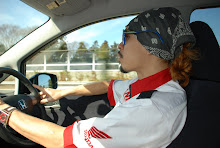SHIBUYA
Shopping, showing off, wining or dining - whatever you want you'll find it in Shibuya (open 24 hours)!
Tackling Tokyo
So you've come all the way to Tokyo and on first glance, the city might seem to be nothing more than a confusion of narrow, nameless streets full of roaring locomotives writhing tirelessly beneath high-rise cliffs of concrete. Splashes of green offer occasional respite from the hustle and bustle, but generally, to foreign eyes, first appearances can sometimes be intimidating!The good news is that with a little map study and persistence, you will soon be on the right track and seeing all the sights in no time (if that map study time is now, you'll definitely want to see the railway maps below).Accept that at first, just about everywhere you go may look identical to everywhere else. Based on first impressions, it is hard to keep good track of what is where and vice versa. Keep in mind, though, that each Tokyo community - even if they look the same to you - is unique and has a subtle niche in the lives of Tokyoites. One area might specialize in kitchenware while another could be famous for fish and meat. Other areas such as like Jinbo-cho sells almost nothing but second hand books. Like anywhere else in the world, the more time and respect you pay to the city, the better care it will take of you. If you overlook little differences all around you, you may stumble into a place with absolutely nothing to do and nothing to see.
There are arguably several centers to the capital and each one is unique and worth a visit. For a good taste of what this city is all about, plus a bit of fashion and entertainment, Shibuya is a good place to start. You could spend several happy days in Shibuya without ever getting close to boredom, and for those with a penchant for shopping, it's retail heaven.You can check out all the latest fashions, buy some music, have a drink at one of the many stylish bars in the area and later (if you're not too exhausted by all this) dance the night away until the early hours. If you get tired of the non-stop bustle, Yoyogi Park toward the north is an inviting, peaceful place to visit; walk around, enjoy the greenery or even take a nap on the lawn.
Alternatively,
you could easily spend several happy and relaxed hours people watching and chilling out in any one of the number of cafes.Shibuya is undoubtedly one of Tokyo's several fashion centers. But what makes Shibuya so unique is not only the style creations in the street stores and malls, but the fashions being exhibited in the crowd. If Tokyo is one of the world's fashion capitals then Shibuya would be the main catwalk. As a visitor, you will fit into one of two categories: the audience or the model. For it is here in Shibuya that you can find people flaunting their wares 'n flares like nowhere else in the world.Homegrown, fresh styles that can be seen are mostly inventions from other fashion realms just around the corner, including those from Harajuku, Aoyama, and Ginza.Each of the fashion districts has its own unique 'look.'
While Ginza is exclusive, sophisticated and favored by the older, wealthier crowd, Harajuku is a haven for the young and packed with wild and crazy styles and Aoyama is a very classy, very creative area. Styles from all these areas pour into Shibuya's streets and onto the 'catwalk.' but the style that stands out the most is Shibuya's original Shibu-kaji a word composed of the two parts: 'Shibu' taken from Shibuya, and 'kaji' corrupted and abbreviated from the English word 'casual.'
Shibuya casual is sort of a copy and remake of the American casual concept, with a Japanese twist. It has evolved many times over since its first conception in the 1970s. And although what could be called original never really took off until the 70s, the idea of trying to copy foreign styles has always been toyed with.Walking around the Shibuya streets today, you are sure to find originality and then some. Current looks in favour include leather or similar tie-around belts that hang long fringe off young girls waists, bandana head coverings with long hair hanging out (seems to come right out of the 80s), the Native American look (especially Navajo inspired leather fringe and silver jewelry), cowboy looking boots or loud clicking sandals with heels, and heavily braided long hair and sometimes even dreadlocks.At first it may seem like the style is mixed to the point of anything goes, but a look further will reveal a set pattern and a forever flowing sense of what's in this season and what's out. Shibuya is the ultimate place for 'professional' style freaks to show off and be evaluated by huge numbers of people. There is even a television show, Karakuchi (outspoken) Fashion Check with host Piiko (brother of gay twin Osugi, also a famous TV personality). The show goes weekly almost always to Shibuya to pick apart and criticize the stylish women walking along the streets!
Star spotting in Shibuya and for those in the know, you'll have a great chance of finding many J-stars here. Shibuya is one of the most popular shopping areas of the stars. On any day of the week, chances are you'll spot a celebrity doing anything from promotions, photo shoots, to just walking about, shopping and waiting for you to notice them!
Shibuya living...
Just outside of Shibuya is one of the most desired places to live among Tokyoites. The size of Japanese property doesn't measure up much to those overseas (if you consider the ratio of price to living space), and the properties around the reaches of Shibuya are very expensive. Although Shibuya has always been an expensive resident district, its prime location also has a part in why living around Shibuya is so expensive. Located on the Yamanote line, a circuit of a track that pretty well marks what most people think of as the center of the city, its very convenient for the lack of tedious commuting involved when living near the center. In terms of real estate, the district is undoubtedly one of the most expensive areas to live in the world. Where an average two-bedroom apartment in an average Tokyo neighborhood would go for around 110,000 yen per month (roughly RM3300), the same size apartment, although probably a bit cleaner, in Shibuya can cost well over double that. To park your car for a month in some areas of Shibuya can cost as much as 60,000 yen (RM1800) per month - the same price you would pay monthly rent for a small 20 square meter (about 180 square foot- believe it or not), one-room apartment in the rest of Tokyo.
Getting around
Access to Shibuya could never be easier. Just take the Yamanote or Saikyo lines. Shibuya station is located between Ebisu and Harajuku. You can also get there via the Hanzomon or Ginza subway lines. After Shibuya, the westbound (heading away from the city) Hanzomon Line changes its name to become the Denentoshi Line. Shibuya is the last stop on the Ginza Line.
Kaki-kaki shopping, apa lagi?? Sini 'heaven' tau?? Bukan pelancong asing jer yang datang bershopping disini malah orang-orang jepun pon sama especially yang muda-muda tu.. Last year diorang ni addicted wif 'LV' stuff, boleh kata semuanya yang berjalan kat Shibuya ni memperagakan barang-barang 'LV'. Bukannya beg sahaja tau malah keychain pon nak brand 'LV'..
Japanese oh japanese.. Tak terikut aku!!!















3 comments:
Ko memang best la bro..byk betul ko buat..layan dan aku tetap support ko!!!
Woot WOot.. i saw coach!
Kurenai : Tks pada dorangan ko tu.. aku tau ko sentiasa menyokong aku.. Tks bebanyak bro... lap u...
Sofia : Coach?? hehe.. saja nak RACUN tuuuuu....
Post a Comment